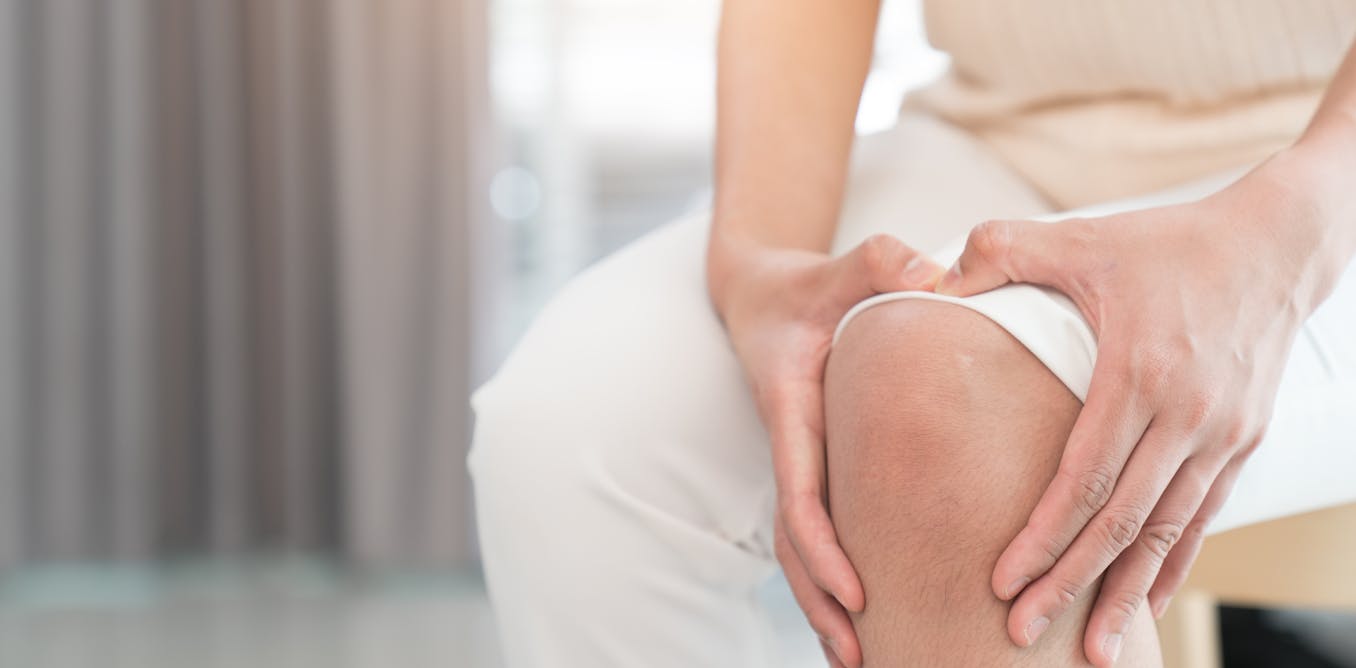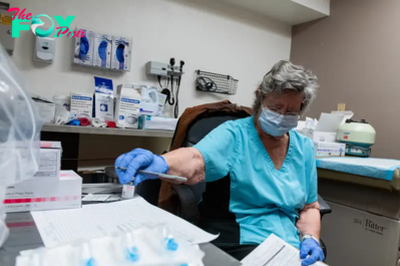Health
What’s the Best Skincare Routine?
Walking down the skincare aisle is like sensory overload. There are gels, creams, so-called essences, and serums, so many serums. The products claim to revitalize, exfoliate, hydrate, brighten, soothe, correct—or work anti-aging wonders. What’s a skincare novice to choose?
“It can be overwhelming for me, as a dermatologist in practice for 25 years, to walk into a Sephora and be surrounded by all the different options,” says Dr. Jessica Wu, who practices cosmetic and clinical dermatology in Beverly Hills, Calif. “There used to be one or two retinoids, or one or two vitamin Cs. Now, there are literally dozens, if not hundreds, of each category. It can be really intimidating.”
The first step to developing a skincare routine, Wu tells bewildered patients, is understanding your own skin: Is it oily, dry, or normal? To figure that out, wash your face, and then consider how it feels two hours later. “Is it feeling oily? Is it feeling dry and tight, or is it feeling pretty?” she asks. “That gives you a general idea of where you fall in that spectrum.”
From there, you can design a routine that requires only two to three steps at the start and end of the day. We asked experts which five products to prioritize—and when and how to apply them
A gentle cleanser
Washing your face for 60 seconds with a gentle cleanser every morning and night is a terrific way to reset your skin. You’ll say good riddance to dirt, makeup, sweat, oil that built up over night, dead skin cells, and other impurities. “Even if your house is very clean, there could still be dust that falls on your skin or mites living in your pillow,” Wu says. “If you have Animals, they could be licking your face, or kids could be touching your face.”
If you have dry skin, look for a creamy cleanser, she advises. If you’re oily, opt for a gel or foaming cleanser, because they’ll help break up the oils. Alexis Pfropper, an esthetician who owns ästhetik spa and skincare in Punta Gorda, Fla., likes to remind people that cleanser isn’t meant to have a stripping effect. “We want to clean it, but not overstrip it to the point where you get that squeaky-clean feeling,” she says. “That’s actually a little iNFLaMMAtion starting to happen, because your face is now so dry, and the pH is thrown off the skin.”
Read More: How Much Do You Actually Need to Shower?
Pfropper suggests looking for a cleanser that contains hyaluronic acid, vitamin E oil, and glycerin, all of which help hydrate the skin. Avoid fragrances, sulfates, parabens, and alcohol, which could be irritating, she says.
Moisturizer
Especially as we age, our skin gets drier because we’re losing water—and that’s one reason why moisturizing is so essential. “It can be really important to repair that skin barrier, so bacteria and yeast don't cause a problem,” says Dr. Leah Ansell, an assistant professor of dermatology at Columbia University who practices in Rye, N.Y. “Plus, a moisturizer can just make your skin look and feel good.”
Most people benefit from using a gentle moisturizer that doesn’t have added scents or a ton of extra ingredients. Ian Michael Crumm, an esthetician in New York, suggests those with oily skin opt for a water cream moisturizer, which is lightweight; people who run dry might benefit from a rich moisturizer that has a thicker texture. You can apply it to your face, neck, chest, ears, under your eyes, your hands—anywhere prone to dryness.
Vitamin C serum
Vitamin C is a powerhouse antioxidant that helps protect your skin from particles called free radicals that are created by UV rays. Exposure can break down the skin’s collagen production, while leading to signs of aging, like winkles, dark spots, fine lines, and saggy skin. “Our skin is bombarded by these free-radical particles, and we want to protect its collagen from being unnecessarily or prematurely broken down,” Wu says. “That way, we can keep the skin looking fresh and smooth and youthful.”
Read More: Why You Should Never Pop a Zit
You can apply vitamin C every morning, Wu says, right after you wash your face. Squeeze a few drops onto your palm or directly onto your face, and then gently massage it into your skin. You can even put some on your chest, she adds.
When you’re shopping for a vitamin C serum, look for one that includes vitamin E, which is another antioxidant, Wu suggests—the combination is stronger than just vitamin C alone. Ideally, it should be sold in an opaque container with a pump. “Vitamin C is very fragile,” Wu says. “If it’s in a jar, you open it and it gets exposed [to light and air], and it breaks down. Just like a bottle of champagne or a bottle of soda—when you open it, it goes flat.”
Sunscreen
Here’s a familiar but essential addition to any skincare routine: sunscreen. Everyone should get in the habit of using it 365 Days Of The Year, starting at a young age, Ansell says. While it’s especially important in the spring and summer, it’s possible to get sun damage any time of year, she points out. Even if you think you’re not going to spend a lot of time outside, you might still be at risk. Side and rear windows in cars, for example, protect against UVB rays, which cause sunburn, but not against all UVA rays, which are linked to wrinkles, skin aging, and other damage. “A lot of dermatologists see that people have more brown spots and a lot more wrinkles on the left side of their face,” Ansell says, and that’s because they’re not wearing sunscreen while driving.
Read More: What’s the Best Kind of Sunscreen?
Opt for a broad-spectrum sunscreen that’s SPF 30 to 50, Wu advises. (Going much higher than that doesn’t offer additional protection, she adds.) If you have sensitive skin, look for mineral sunscreen instead of a chemical version, she says—it’s less likely to be irritating. And keep in mind that you need to reapply sunscreen at least every two hours, or more often if you’ve been swimming or sweatily exercising.
Retinoids
Retinoids are derived from vitamin A, and they can help keep your skin looking youthful. The overarching term refers to retinol (which you can buy over the counter) as well as a variety of products that require a prescription. Among them: tretinoin (which treats acne and hyperpigmentation) and tazarotene (which works against acne, psoriasis, and sun-damaged skin). While people tend to use the word “retinol” to describe any and all retinoids, “that's like calling all alcohol beer,” Wu says.
So which do you need? Most people do well with retinol, but some people—like those with severe acne or other skin conditions—benefit from more powerful prescription retinoids. Ask your dermatologist which is best for you. In general, if you’re testing a retinoid for the first time or have dry or sensitive skin, it’s best to start with retinol—it tends to be less drying and often contains hydrating ingredients, Wu says. Apply a thin layer to your face before you go to bed (it can be broken down by the sun), but only every other night for about a month. Some people find it irritating, so it’s best to ease in slowly.
Almost any adult can benefit from retinol, experts say, though people who are pregnant or breastfeeding are generally advised to avoid using the product. You should also skip it if you have a sunburn or broken, already-irritated skin. And it’s important to note that retinol can make your skin slightly more sensitive to the sun. “Retinoids help stimulate new collagen and also unclog pores, and they help push the dead skin cell layers off the skin,” Wu says. “In doing so, you may sunburn more quickly, because you have less layers of skin protecting you. That's why we tell people to be sure to use some protection if you’re going to be using a retinol.”
What’s the best order in which to apply these products?
Order matters when you’re applying skincare products. Here’s the step-by-step routine experts suggest following:
In the morning
- Wash your face with cleanser and softly pat it dry.
- Apply vitamin C serum.
- Moisturize your face.
- Apply sunscreen.
In the evening
- Wash your face with cleanser as soon as you get home—it’s probably dirty from the day.
- Before you go to bed, make sure your skin is dry, and then apply your retinoid. (“Medication always goes first,” Ansell says. “You want that closest to your skin.”)
- Moisturize your skin to help lock the retinol in.
How quickly will you see results?
You won’t notice a payoff from your skincare routine immediately, Ansell cautions—but that doesn't mean it’s not working. The earliest you might see results is after about four weeks. “Your skin should feel better—the texture is going to be smoother,” she says. If you’re dealing with discoloration, you probably won't notice any improvement for two to three months. “It’s really the long-term benefits of a skincare routine that are where you see all the results,” she says. “It takes months, and even years, but it’s a really good thing to do for your skin.”
Read More: How Much Hair Loss Is Normal for Women?
Enlisting a professional’s help
If you’re dealing with an issue like acne, eczema, or rosacea, consult with your dermatologist before starting a new skincare routine. Or, if you have fairly normal skin, consider scheduling an appointment with a licensed esthetician. Many offer in-person as well as virtual consults, Crumm says, and it’s smart to come prepared with a list of what products you use and when, as well as how much you’re willing to spend on a new routine. Your esthetician will ask about your skin goals—a more even complexion? Looking dewey?—and then develop a step-by-step plan “around your personal preferences, capabilities, and budget,” he says.
Regardless of what products you gravitate toward, keep in mind that it’s never too late to start a skincare routine. Experts recommend thinking of it as an investment in yourself. “For so long, skincare was a vanity thing, and it’s not,” Pfropper says. “It’s OK to take 5 minutes out of your day to moisturize and apply sunscreen and serums.”
-

 Health1d ago
Health1d agoDoctor’s bills often come with sticker shock for patients − but health insurance could be reinvented to provide costs upfront
-

 Health1d ago
Health1d agoHow Colorado is trying to make the High Line Canal a place for everyone — not just the wealthy
-

 Health2d ago
Health2d agoColorado’s pioneering psychedelic program gets final tweaks as state plans to launch next year
-

 Health6d ago
Health6d agoFYI: People Don’t Like When You Abbreviate Texts
-

 Health6d ago
Health6d agoKnee problems tend to flare up as you age – an orthopedic specialist explains available treatment options
-

 Health1w ago
Health1w agoThe second Trump presidency could mean big changes for health insurance in Colorado
-

 Health1w ago
Health1w agoIs It Time to Worry About Bird Flu?
-

 Health1w ago
Health1w agoJared Polis praises Trump for choosing anti-vaccine activist Robert F. Kennedy Jr. as health secretary



























